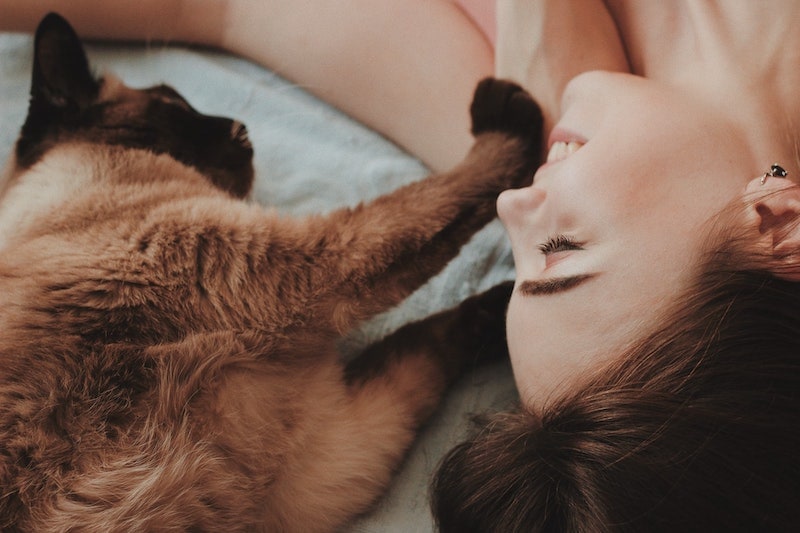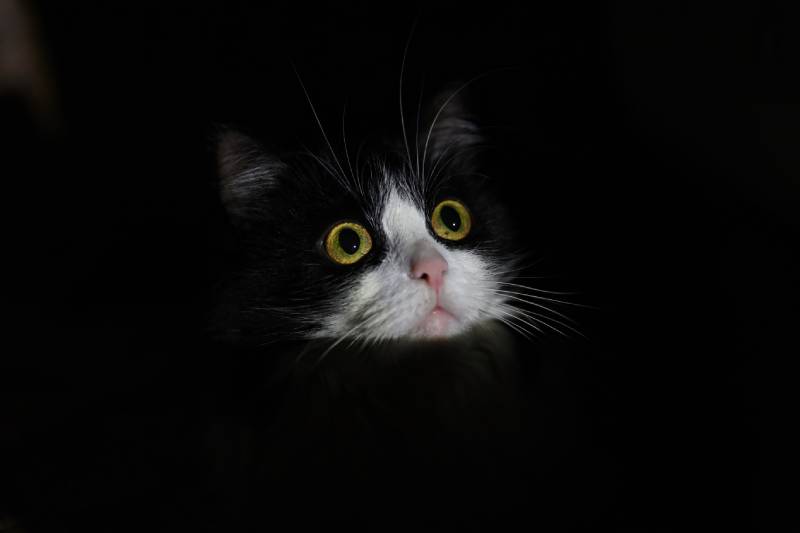How to Cat-Proof Plants: 11 Possible Ways

Updated on
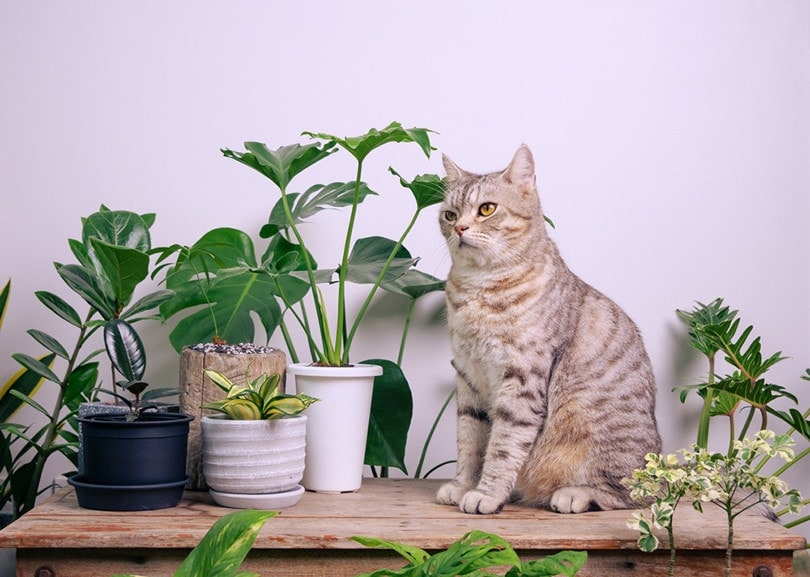
Houseplants are beautiful additions to your home. They not only provide a pop of color, but they can also reduce stress levels and even improve your indoor air quality. There really is no downside to having plants in your home–that is, unless you’re a pet owner.
Cats love to gnaw on plants and do so for a wide variety of reasons. The problem with this obsession is that it can be dangerous if the plant they’ve taken a liking to happens to be one of the many plants that are toxic to cats.
If you’re looking to find a way for your cats and plants to live together harmoniously, you’ve come to the right place. Keep reading 11 tips on cat-proofing your plants to keep both your plants and your pets alive and healthy.
The 11 Possible Ways to Cat-Proof Plants
1. Use Scents to Deter Them
Cats have a strong sense of smell, so you can use this to your advantage to protect your precious plants because several scents will turn cats off immediately.
Citrus is a common deterrent that green thumbs and cat lovers use to protect their plants. Try diluting the juice of fresh citrus fruit like lemons or oranges with water, and spray it onto the leaves of your cat’s favorite plant.
Note: Be sure to only use the juice of real fruit and not citrus-scented essential oils, which could be dangerous to your pet.
Cayenne pepper is another strong scent that cats don’t like. Sprinkle some onto the soil surrounding your plants. Most cats also dislike the scent of vinegar, so try diluting some apple cider vinegar with water in a spray bottle.

2. Get Houseplants That Cats Won’t Chew On
Certain houseplants have natural cat-deterrent properties. You might consider growing these plants to train your cats that all houseplants are gross, or you might just choose to only grow these houseplants.
Rosemary is a highly aromatic herb that most cats won’t go near. It smells lovely to most humans, and you can break off fresh sprigs to add a little something to your cooking.
Cacti are other houseplants that most cats won’t go near. Varieties like the Christmas cactus or Thimble cactus are non-toxic to cats, and since they’re both pokey, pets don’t usually touch them (at least after the first prick).
3. Put Your Plant Somewhere Safe
The only sure way to ensure your cat won’t eat your plant, aside from not keeping plants indoors, is to keep your beloved greenery far out of your cat’s reach.
Create a cat-free zone in your home to grow your plants. Make use of that spare bedroom you never use!
If that’s not an option for the space you’re working with, hanging your plants from the roof or placing them on a tall shelf is another option. The kicker here is that you need to be absolutely 100% sure that there is no way your cat will be able to reach the plant. Any cat owner knows that they’re mischievous little devils that are amazing at finding innovative ways to get what they want.
Even if your plant is hanging out of your cat’s reach, falling leaves or petals can become dangerous, so make sure that the plants you’re growing are still pet-friendly. Some plants, like certain species of lilies, are so poisonous that even just sniffing the pollen or getting it on their fur and then grooming themselves later, can be fatal.

4. Give Them Their Own Plant
If your cat is chewing on your houseplants, it might help to buy them their own plant. Eating foliage like cat grass can help your cat have regular bowel movements and can even relieve an upset stomach.
Cat grass is a safe alternative to the grass you’d find in your backyard. It’s simple to grow and starts sprouting fast.
You can find cat grass growing kits in most pet stores. All you need to do is water it, put it in the sun, and wait about a week or so for your cat’s personal garden to sprout.
Some pet stores even sell pre-grown pots of cat grass you can take home and offer to your kitty right away.
Cat thyme is another cat-friendly plant that acts as a feline stimulant. If your cat doesn’t react to catnip, they may get the stimulating effects from this thyme plant.
Calendula and echinacea are two beautiful flowers that also have medicinal properties. Both are safe for cats. However, be aware that echinacea grows quite tall, so you might need to relocate it outside after a while.
5. Train Them
Cats can be very difficult to train, but with some patience and determination, you can train them to steer clear of your house plants. Positive reinforcement goes a long way with pets. Essentially, you need to reinforce your cats for behaviors that are non-compatible with messing with your houseplants—for example, sniffing their own cat grass instead or playing with a toy. You must also ensure that your cats have plenty of options to keep themselves entertained.

6. Give Them Timeouts
While mostly reserved for children, timeouts work for pets too. The key is that you need to put them in a time-out the moment you see them gnawing at your plant. If you’ve been at work all day and come home to a chewed-up plant, a timeout won’t work because your cat won’t be able to equate their bad behavior from earlier in the day with the consequence. They just won’t understand why you gave them a timeout.
Place your kitty in a room on their own, where they will be deprived of attention. Laundry areas or bathrooms are ideal locations.
Keep their time-outs to around 10 minutes. Your cat will eventually learn to connect their bad behavior with their isolation. Remember that this not a punishment, but rather a time to decompress, so please make sure the room is not a place that is normally scary for your cat.
7. Make Noise
Most cats react to the sound of sudden noises, so making a ruckus when you see them near your plant could be enough to steer them away. Even something as simple as a firm “psst” noise can stop them in their tracks.
You can try shaking a noisy can or a plastic water bottle filled with screws or pennies.
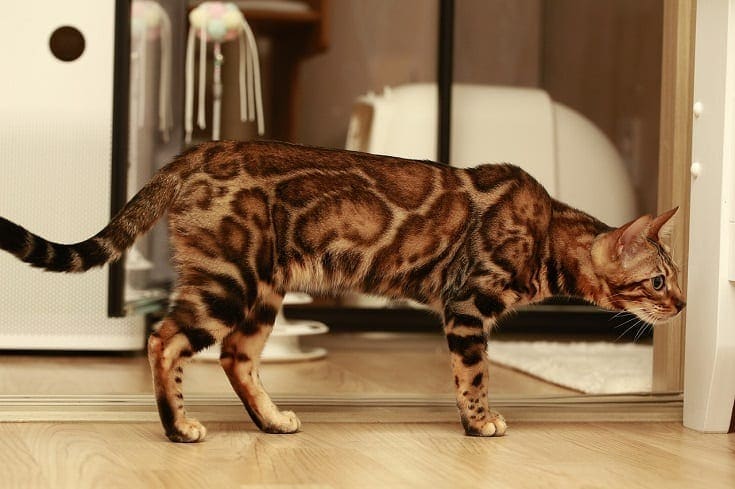
8. Create Your Own Cat Deterrent Spray
You can concoct your own cat deterrent spray with ingredients you probably already have in your home. Here are a few recipes to try.
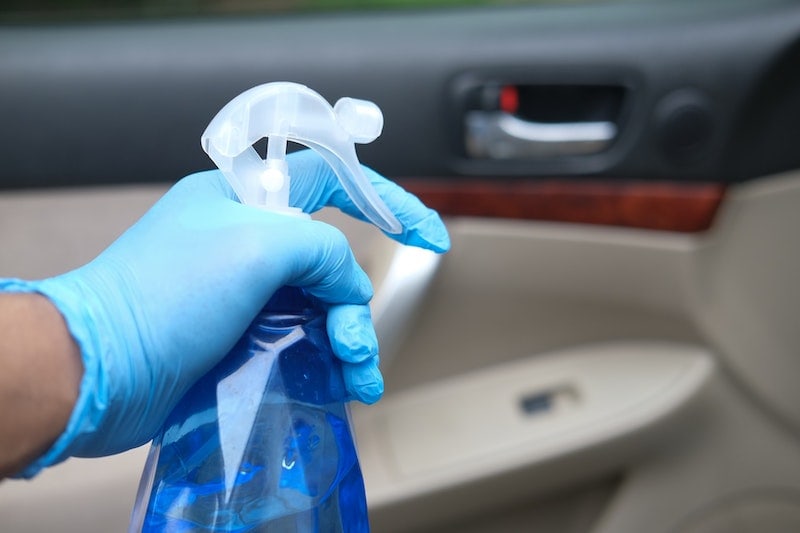
Vinegar Cat Repellent
Mix white vinegar and water in a 1:1 ratio in a spray bottle. Swirl the liquids to mix them, and add one squirt of dish soap to the mix. Put the lid on the spray bottle, and shake well to combine. Spray this around your plant pots to deter your cat from getting near them.
Orange Peel Repellent
Add 2 cups of water to a pot, and bring it to a boil. Add 1 cup of orange peels to the pot, lower the heat, and allow the mixture to simmer for 20 minutes. Remove from heat and cool.
Once the mix has cooled, pour it into a spray bottle. Remove any large peel pieces that won’t fit through the mouth of the bottle. Squeeze some lemon-scented dish soap and fresh lemon juice into the mix. Shake to combine. Use this spray in the area near your houseplants to prevent your cat from approaching them.

Cinnamon, Rosemary, and Vinegar Repellent
Boil 2 cups of water over the stove. Once it’s boiling, add 2 teaspoons of cinnamon and dried rosemary. Stir the concoction together and leave it to stand overnight.
Add 1/2 cup of apple cider vinegar in the morning, and pour the mixture into a spray bottle. Shake well to combine. The idea is to spray this near the plants to deter the cat from getting close to them.
9. Use a Commercial Cat Repellent
There are several high-quality commercially made cat repellents on the market.
EverJoice makes a Cat Forbidden Zone Spray that is designed for use on plants and furniture. The all-natural formula is alcohol-free and has a pleasant scent for humans.
Hywean’s Professional Pet Behavior Correction is an effective formula made with bitter agents and plant extracts. You can use this spray on typical chew targets, such as cords, furniture, and houseplants.
Bodhi Dog’s Bitter Lemon Spray is designed to prevent your pets from biting, licking, and chewing inappropriately. The all-natural repellent will work on a wide variety of surfaces, such as wood, leather, stone, plastic, rubber, and houseplants.

10. Use Texture and Sounds
Texture and sounds can also keep your pets away from your plants.
Try placing an upside-down carpet runner near the area where your plants are. The rubbery surface of the runner feels uncomfortable under their paws so they may lose interest in your plants.
Cat scat mats like those from Ley’s prevent cats or critters from digging in not only your outdoor garden but also your planted pots. The mats feel uncomfortable when your cat steps on them, but it will not hurt them.
The texture and sound of crumpled-up aluminum foil is also a great deterrent. Try placing aluminum foil on top of the soil in your potted plants.
11. Use an Automatic Cat Deterrent
Motion-activated deterrent sprays will literally surprise your cat when no one is around. These devices will detect your cat’s movement within 3 feet away from the plant and deliver a safe spray and a noise that will surprise your cat and prevent them from approaching your plants or any other area that you wish them to keep away from.
These devices do the deterring and correcting without harming your personal relationship with your cat. The negative consequence is delivered by the environment when you are not there.
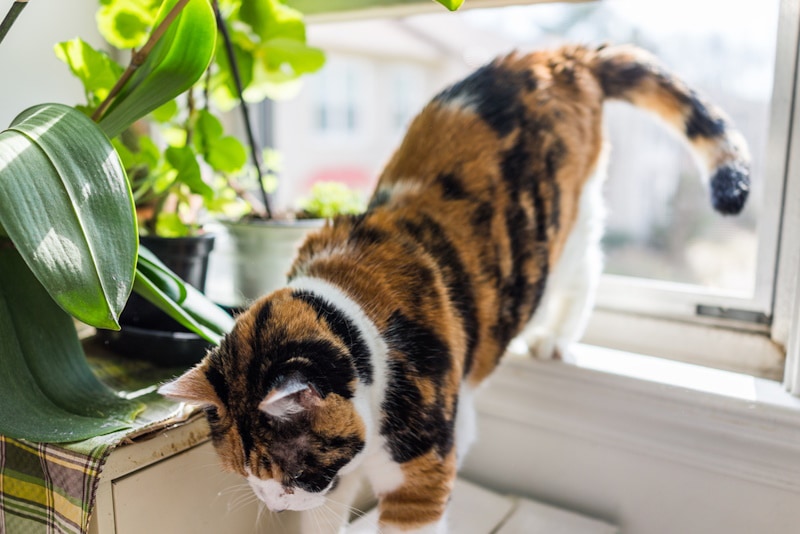
Are All Houseplants Safe for Cats to Eat on Occasion?
Absolutely not.
Many houseplants can be toxic if ingested. It’s important to familiarize yourself with these potentially life-threatening plants so you can keep them out of your home.
The most dangerous indoor plants for households with cats are:
- Lily
- Jade
- Eucalyptus
- Daffodil
- Hyacinth
- Azalea
- Ficus
- Monstera
- Philodendron
- Poinsettia
- Sago palm
- Elephant’s ear
- Aloe vera
- Dieffenbachia
- Snake plant
Final Thoughts
Plants and cats can live together in harmony, but it will take some effort, patience, and forethought from you. Never punish your cat with force or spritz them with a water bottle to keep them away from your plants. Doing so will only harm the bond that you’ve created with your pet.
See also:
- 8 Reasons Why Your Cat Is Scratching at the Window (Cat Behavior Explained)
- How to Get Cats Out From Under Your House: 8 Effective Methods
Featured Image Credit: Foto2rich, Shutterstock

